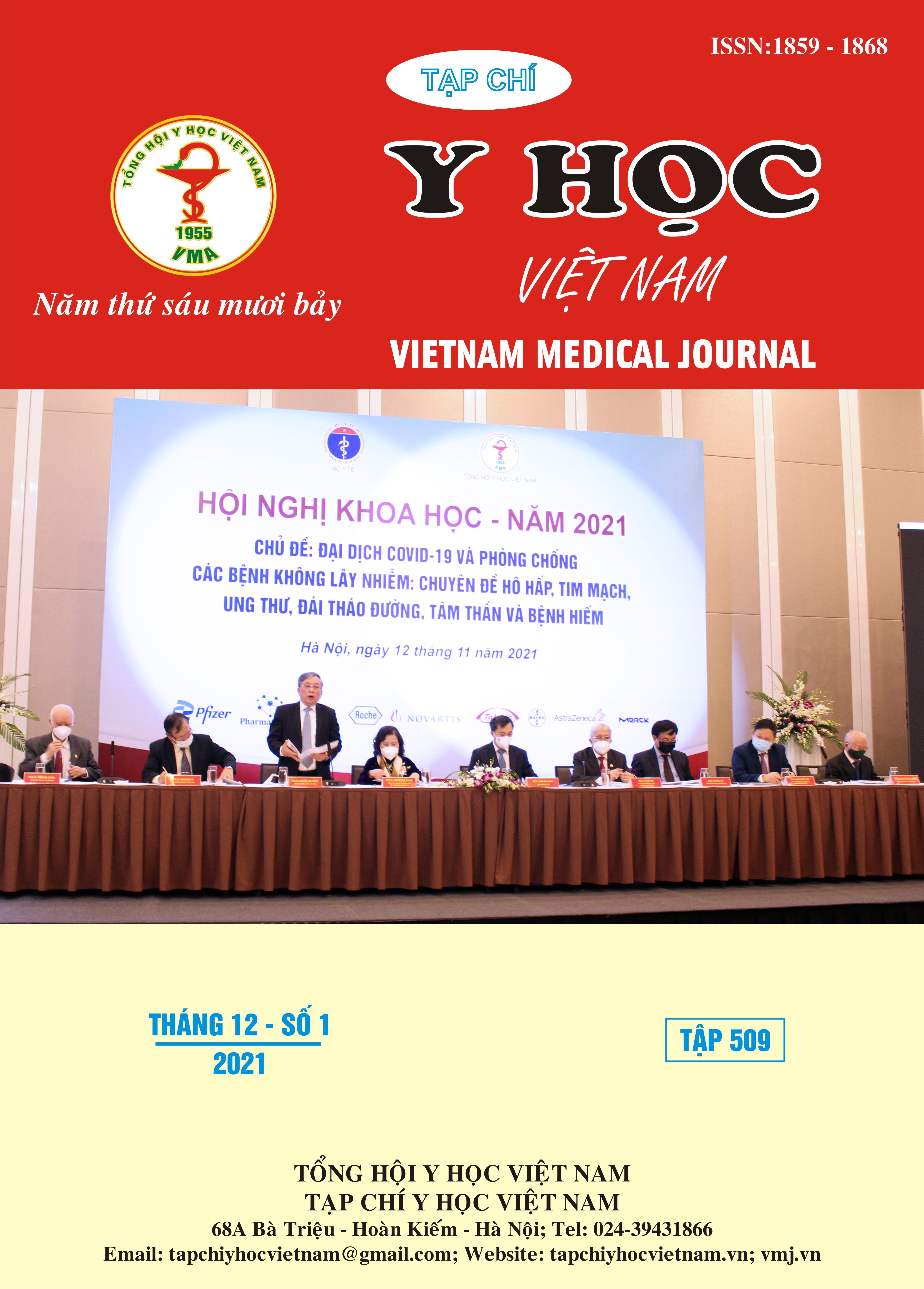STUDY RIGHT VENTRICULAR FUNCTION IN PATIENTS WITH AORTIC VALVE SEVERE STENOSIS
Main Article Content
Abstract
Aim: Study the rate of right ventricular dysfunction and the correlate between right ventricular function and some parameters assessing the stage of aortic valve stenosis and left ventricular function on echocardiography in patients with severe aortic valve stenosis. Subjects: Patient with aortic valve severe stenosis (According to the standards of the American Society of Echocardiography: peak velocity transaortic valve˃4m/s, AVA< 1cm2, mean aortic pressure gardient ˃40mmHg) came and treated at Tim Mach Quoc Gia hospital august 2020 to august 2021. Method: Prospective study, cross-sectional, choose convenient sample. Assessment right venticular function (TAPSE, FAC, S’, E/e’ lateral tricupid valve, RIMP, diameters of right venticular). Result: Forty-seven patients were studied by echocardiography. Incedence right ventricular global dysfunction assessment by Tei (˃0,54) is 68,1%, right ventricular systolic dysfunction (S’<9,5 cm/s) is 29,8%, (FAC<35%) is 4,3%. Right ventricular function measured by TAPSE was moderately correlated with maximal velocity through the aortic valve (r = 0.389, P <0,01). FAC, Tei measured by tissue doppler, S’ velocity were all correlate with index aortic valve area with correlation coefficient (r= 0,361; -0,297; 0,302 p<0,05) respectively. The longitudinal right ventricular diameter was moderately correlated with the maximal velocity across the aortic valve (r = 0.38 p < 0.01) and the aortic valve area measured by the continuous equation (r = 0.313 p <0.05), mean gradient pressure van (r=0,412 p< 0,01), max gradient pressure (r= 0,411 p<0,01). TAPSE, FAC, S’velocity, Tei were all strong corellate with left ventricular ejection fraction (EF) with correlation coefficient (r= 0,512; 0,658; -0,372; 0,409; p< 0,01). Conclusion: Right ventricular dysfunction is quite common in patients with aortic stenosis. Right ventricular function was correlated with peak systolic transaortic velocity (TAPSE), with aortic valve area index (FAC, S', Tissue Tei) and left ventricular systolic function.
Article Details
Keywords
aortic valve stenosis, echocardiography, right venticular function
References
2. Right heart dysfunction in heart failure with preserved ejection fraction | European Heart Journal | Oxford Academic. Accessed August 11, 2021. https://academic.oup.com/ eurheartj/article/ 35/48/3452/472871?login=true
3. Santamore WP, Dell’Italia LJ. Ventricular interdependence: Significant left ventricular contributions to right ventricular systolic function. Progress in Cardiovascular Diseases. 1998;40 (4):289-308. doi:10.1016/S0033-0620(98)80049-2
4. Galli E, Guirette Y, Feneon D, et al. Prevalence and prognostic value of right ventricular dysfunction in severe aortic stenosis. Eur Heart J Cardiovasc Imaging. 2015;16(5):531-538. doi:10.1093/ehjci/jeu290
5. Nguyễn Thu Trang NTBY. Khảo sát chức năng thất phải bằng siêu âm tim ở bệnh nhân suy tim có EF<40% so với nhóm suy tim EF>40%. Published online 2020. http://thuvien.hmu.edu.vn/ pages/cms/FullBookReader.aspx
6. Nguyễn Tá Tâm NTBY. Bước đầu đánh giá chưc năng thất phải bằng chỉ số Tapse trên siêu âm tim ở bệnh nhân nhồi máu cơ tim ST chênh lên sau can thiệp. Published online 2017. http://t huvien.hmu.edu.vn/pages/cms/FullBookReader.aspx
7. Puwanant S, Priester TC, Mookadam F, Bruce CJ, Redfield MM, Chandrasekaran K. Right ventricular function in patients with preserved and reduced ejection fraction heart failure. European Journal of Echocardiography. 2009;10(6):733-737. doi:10.1093/ejechocard/jep052


